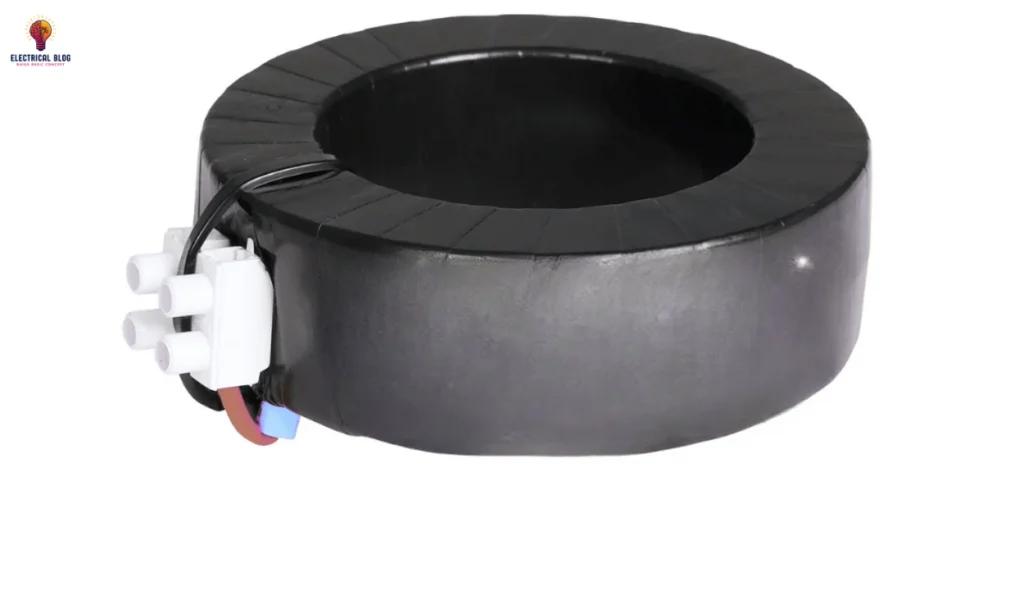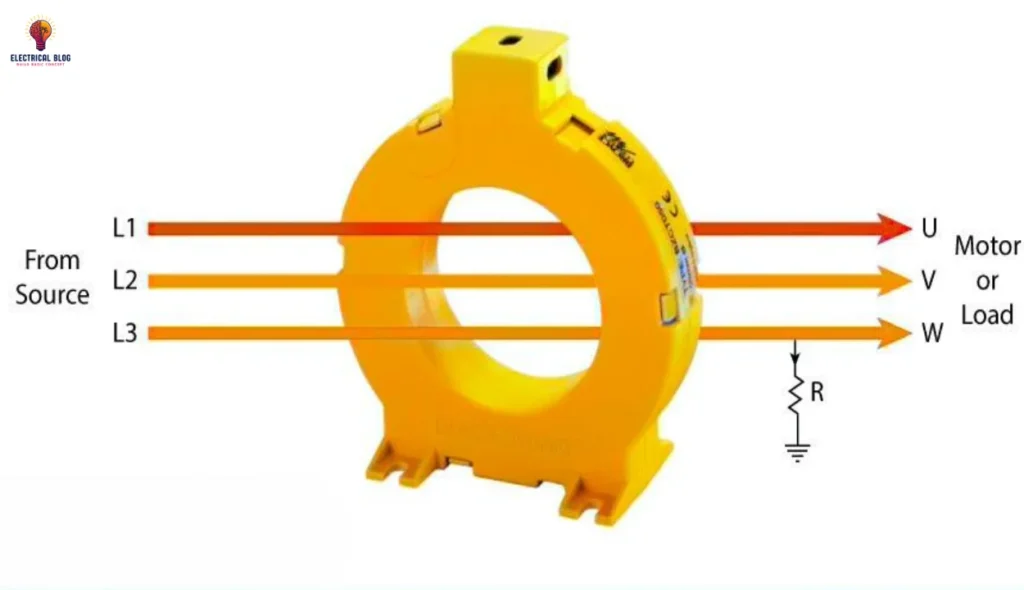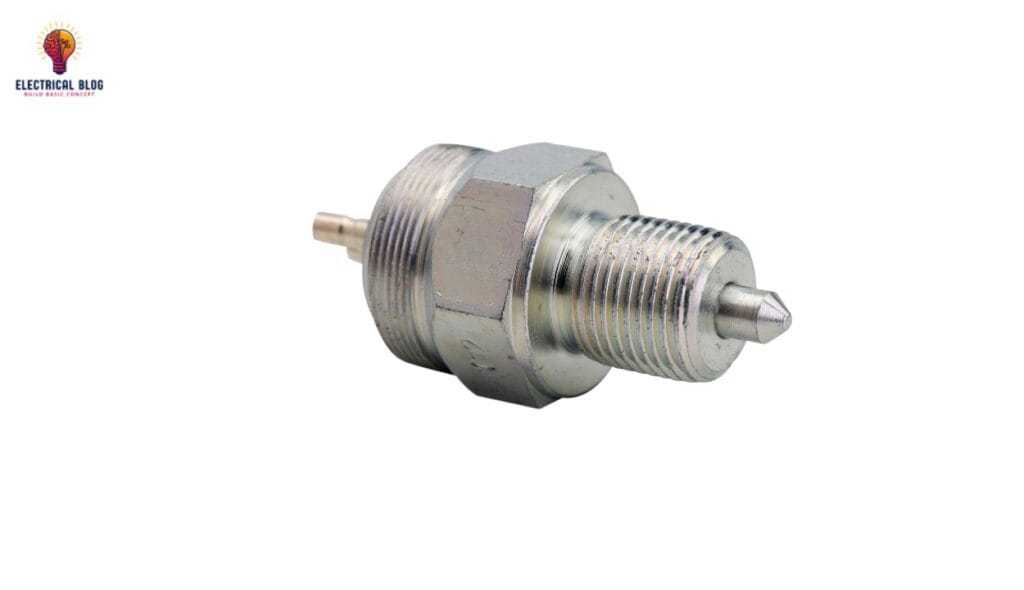Understanding Core Balance Current Transformer
A core balance current transformer (CBCT) is a special type of current transformer designed to detect imbalanced current in electrical systems. It features a magnetic coil wound around a ring-shaped core, forming the primary and secondary coils. In a three-phase system, single-core cables or a single three-core wire pass through the circular ring, creating a current sensor that monitors the flow of current in the circuit. The CBCT is employed in electrical protection systems to detect faults like earth fault, earth leakage, and zero-sequence fault currents, ensuring the circuit remains healthy.
When the system is operating normally, the magnetic fluxes of the three phases effectively cancel each other, leaving the secondary current at zero. However, during a fault, such as an earth fault, the balance is disrupted, generating a resultant flux in the secondary. This activates the earth fault relay or another protective device, producing a tripping signal to break the circuit. The CBCT, also referred to as the Zero Sequence Current Transformer (ZCT), is a fundamental device for maintaining safety and efficiency in electrical systems, particularly in managing ground faults and ensuring reliable operation.
Working Principle of a Core Balance Current Transformer
A Core Balance Current Transformer (CBCT) works by detecting any system imbalance in a three-phase system. Under normal operation, the three-phase currents (Ia, Ib, and Ic) maintain symmetry, and the algebraic sum of the phase currents is zero, as per Kirchhoff’s current law. This balanced state ensures that the residual current in the system is also zero, leading to no magnetic field flux in the CBCT’s core. The inductance coil in the secondary remains inactive, and no secondary coil current flows, allowing the power system to function normally.
However, when a fault such as a line-to-earth fault or line leakage fault occurs, the system becomes unbalanced. This creates a resultant current due to the zero-sequence current, which generates a magnetic field flux in the ring-shaped core of the CBCT. The magnitude of this flux is proportional to the consequent residual current. The secondary coil then produces a low-value current, which is sent to a relay. This relay activates and sends a trip signal to the circuit breaker, disconnecting the fault zone and protecting the system.
The CBCT function relies on maintaining the zero-sequence current balance. If the total current in the primary deviates from zero, the CBCT detects it. By identifying the neutral current and monitoring the magnetic field flux (Φa, Φb, and Φc) generated in response to the imbalance, the CBCT ensures the safety of the power system. This fundamental operation makes the Zero Sequence Current Transformer (ZCT) a crucial part of an electrical protection system.

Selection of Core Balance Current Transformer
Choosing the right CBCT or zero-sequence CT depends on several parameters that ensure effective performance and fault detection. The nominal CT ratio must be carefully selected so that even the smallest ground fault produces enough current to activate the earth fault relay. The primary ground leakage current should be kept to a minimum to avoid unnecessary trips. The relay requires a sufficient amount of excitation current at the operating voltage to function accurately. Factors such as the CT dimensions and internal diameter, which vary based on cable size and the exact point of installation, are also crucial for proper selection.
Characteristics of Core Balance Current Transformer
Core Design
The CBCT is designed with a toroidal core that surrounds the conductor, allowing it to measure current efficiently. This design makes the CBCT non-intrusive and highlights its fundamental capability to detect current without direct interference, making it an essential tool in many electrical systems.
Accuracy
CBCTs are known for their accuracy, providing measurements with low measurement errors, typically less than 1%. This level of precision is maintained across a variety of currents and frequencies, ensuring consistent performance. Whether measuring over a large range of values or under varying conditions, CBCTs consistently deliver reliable results.
Installation Process
When installing CBCTs, the process is quite efficient. The conductor can be easily clamped around the system, allowing the CBCTs to be installed quickly and securely. The best part is that this can be done without interrupting the power source, making it a convenient solution for ongoing operations. CBCTs may be set up rapidly, ensuring minimal downtime while achieving accurate monitoring.
Safety
CBCTs are designed with safety in mind, as they do not require being physically connected to the conductor. This means they can be set up without adding any extra electrical noise to the system. Their design ensures they are secure to use and will not interfere with the normal functioning of electrical systems. By not needing direct physical connections, CBCTs also reduce the risk of accidents or faults during installation.
Output Signal
The output signal from a CBCT is typically proportional to the current flowing through the conductor. This signal plays a key role in various applications like monitoring, controlling, and protecting the system. By generating a precise signal, the CBCT helps ensure that the electrical setup remains safe and functional, as the signal can be used to track and respond to changes in the current for optimal system performance.
Size
When choosing a CBCT, the size plays an important role depending on the application. For domestic and commercial use, compact devices are ideal as they are smaller and easier to install. However, for industrial applications, you may need bigger equipment due to the larger sizes required to handle higher current loads. The CBCT is available in a variety of sizes, so it’s essential to pick the one that suits your needs.
Cost
CBCTs are often a desirable solution due to their less expensive nature when compared to traditional CTs. They don’t require a solid core or secondary winding, making them more cost-effective. This makes CBCTs an ideal choice for a wide range of applications. They are also known for being efficient and dependable, especially when it comes to measuring AC currents. Their simplicity in design offers cost savings without compromising performance, making them a smart choice for numerous applications.

Advantages of Core Balance Current Transformer (CBCT)
One of the key advantages of using CBCT in an earth fault prevention system is its efficiency. Unlike a typical system that requires multiple CT cores, CBCT only needs a single CT core, which reduces the magnetic flux and lowers the required secondary current by one-third. This unique protection method enhances the total sensitivity of the system, making it more reliable for detecting faults with greater accuracy. The simplicity of using fewer CT cores results in a more compact and cost-effective solution while maintaining robust fault protection.
Disadvantages of Core Balance Current Transformer (CBCT)
One major disadvantage of CBCTs is that the conductor must be fully enclosed within the magnetic core, which limits its use with large conductors. This makes the transformer difficult to operate for bigger setups. Additionally, CBCTs are ineffective in measuring current for several conductors at once, as they can only measure a single conductor. Another important point is that CBCTs can only measure alternating current (AC) and are unable to measure direct current (DC), further limiting their applications.
Applications of Core Balance Current Transformer (CBCT)
CBCT is widely employed in various systems due to its effectiveness. It is commonly found in power control panels where it helps in current measurement. In motor protection circuits, CBCT plays a crucial role in safeguarding machinery from faults. For heavy or large electrical machinery, CBCT is used to protect the equipment, ensuring its safety. Additionally, CBCT is utilized in leakage current measurement systems and is key in the installation of high-range electrical power systems, providing reliable protection and monitoring.
Conclusion of Core Balance Current Transformer
Core Balance Current Transformers (CBCT) play a critical role in detecting earth faults within electrical systems. By measuring the imbalance in current between phase and neutral conductors, they provide accurate and reliable fault detection, which is essential for system safety and operational efficiency. Their high sensitivity ensures early identification of leakage currents, preventing potential damage or hazards. CBCTs are integral in environments requiring stringent safety standards, offering a straightforward yet effective solution for maintaining electrical system integrity.



